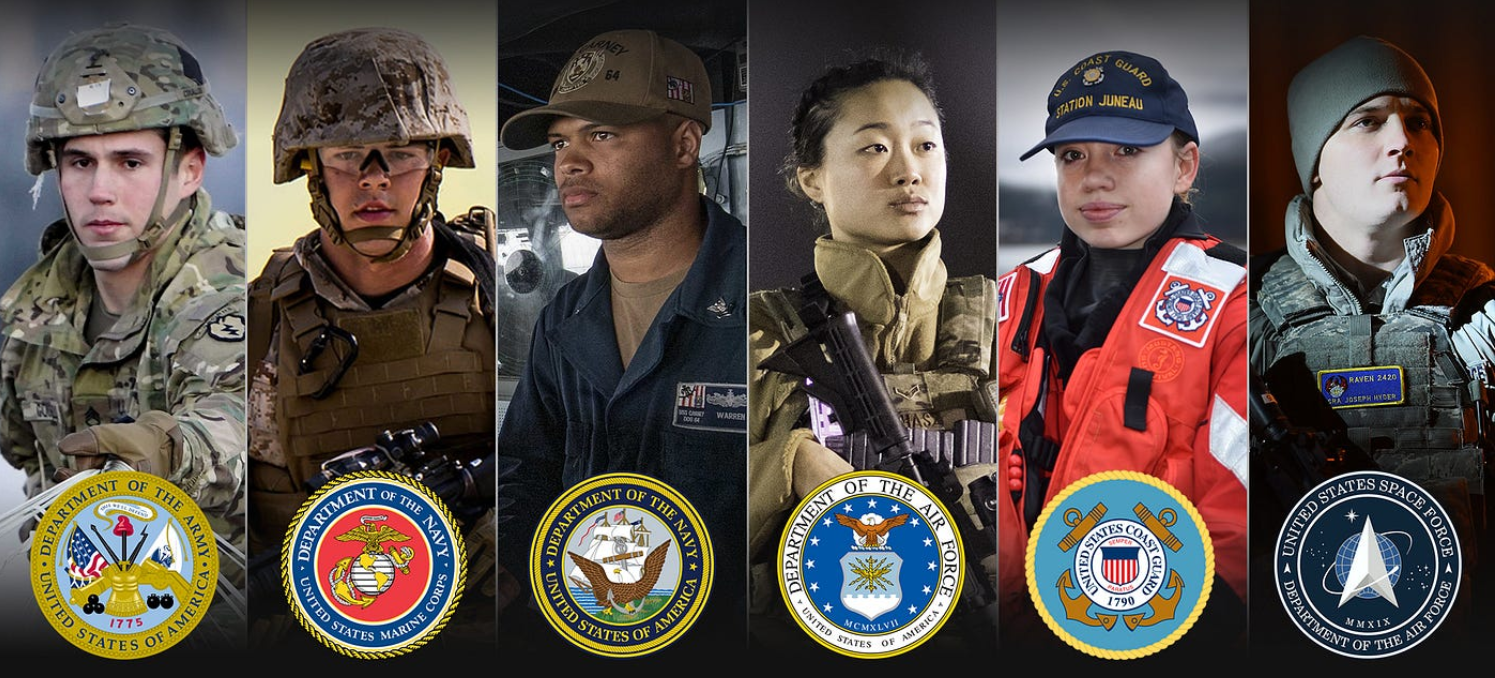Military
-

What is the military? In simple terms, it is made up of the six armed service branches: Air Force, Army, Coast Guard, Marine Corps, Navy, and Space Force. There are three general categories of military people: active duty (full-time soldiers and sailors), reserve & guard forces (usually work a civilian job, but are occassionally called to full-time military duty), and veterans and retirees (past members of the military).
The President is the Commander in Chief. He/She makes all final decisions, but the real work is done by those below him/her. The Department of Defense (DoD) has control over the military and each branch. With over 2 million civilian and military employees, the DoD is the world's largest "company."
Each branch of the military has a unique mission within the overall mission of U.S. security and peace. Here they are in a nutshell:
Air Force: The Air Force protects American interests at home and abroad with a focus on air power.Army: As the oldest branch of the U.S. Military, the Army protects the security of the United States and its resources.
Coast Guard: The Coast Guard is a maritime force offering military, law enforcement, humanitarian, regulatory and diplomatic capabilities.
Marine Corps: The Marine Corps is often first on the ground in combat situations.
Navy: The Navy delivers combat-ready Naval forces while maintaining security in the air and at sea.
Space Force: The Space Force defends U.S. interests on land, in the air, and from orbit with a range of advanced training and technology.
The National Guard and Reserve Programs
It's the way of the Weekend Warrior, but it's also much more than that. If you're considering joining the military, National Guard and Reserve programs provide flexibility and rewards. Guardspeople and Reservists play a critical role in national defense, while also receiving part-time service, pay and benefits.
Each Reserve and National Guard service involves different requirements, commitments and responsibilities. And of course, serving in one service branch can be very different from serving in another service branch.
So, remember to take a look at what each branch has to offer for both Reserve and National Guard opportunities. Be sure to also check with your local recruiters to get the latest information on benefits and career options.Military Academies
Four service academies combine "Ivy League"-quality education with special training. Competition is extremely fierce to get into the academies; three require nominations.
Once accepted, cadets or midshipmen receive full benefits along with a tuition-free education. All graduates earn a Bachelors of Science degree.



